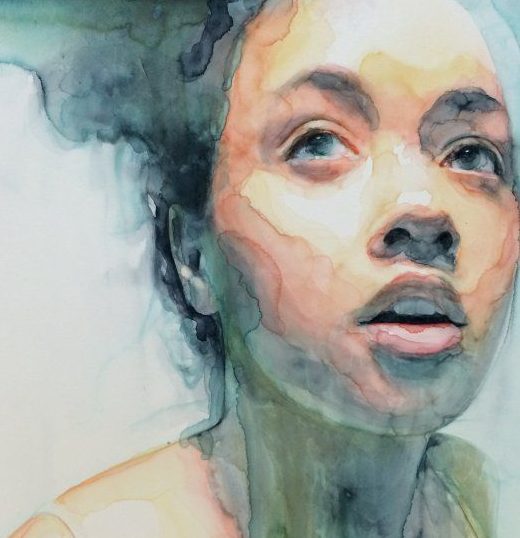The Challenges of Character Self-Description in Fiction
Characters in fiction are the heart of any story. We all love characters that pop off the page, that resonate with us, that we empathize with and root for. Surely, to get readers to care about characters, writers of fiction have to describe them.
But there are pitfalls to describing characters. Today’s fiction is all about “show, don’t tell,” so dropping in a laundry list of character attributes into a scene is a no-no. There are masterful ways to describe characters, and it’s a skill that requires a lot of effort and practice.
I wrote a number of posts on masterful character description, so be sure to read them carefully, as you’ll come to see the nuances and challenges in crafting great description.
But in this post I want to talk about character “self-description.” In other words, when and how would a writer have a POV (point of view) character describe himself? Should he ever? If he doesn’t describe himself, how will readers know what he looks like? Does it matter?
As much as it sounds logical to, at some point in your story, have your character describe himself, it really isn’t all that wise, useful, or believable.
I’ve heard it said that Stephen King never describes his characters; he wants readers to form their own picture in their mind (not sure if that’s true, but it’s good advice, in general. Hear me out).
If I tell you my character’s name is Tiffany Bubbles, it’s going to conjure a certain picture in your mind. Names are so critical for this reason—especially ones that go a bit beyond the mundane. Your picture of Tiffany is no doubt different from mine, but the image you put together of Tiffany as you read about her, watch what she does, hear how she talks, is going to add to the physical picture you have of her.
We want our readers to engage and immerse themselves in our stories. We want to give them space to bring in their imagination and picture the worlds we create. If we describe everything in minute detail, we deny them the opportunity to personalize their experience. Less is often more.
POV Rules
Well, you might say there are “no rules” in fiction. But, in general, there are acceptable rules for POV. And when you violate these rules, many readers notice and they are not happy. One of the rules for POV is that the character can only see, think, feel, hear, and react to what they are experiencing in the moment and what is “in character.”
To have a character in the middle of some action suddenly start describing herself (“Tiffany was tall, blonde—the kind that came from a bottle—nearly anorexic, and loved cats”), it’s a screaming violation of POV. Tiffany is probably not suddenly stopping to think of her looks or what type of person she is.
Now, there are certainly moments you can create in your story in which your character does need to look at herself in a mirror, for example. And she might notice something out of the ordinary, or a specific feature that has been bothering her. And, rarely, she might assess every feature she sees to evaluate her good and bad features. Okay, we all do that on occasion (some of us more than others). So it can be believable.
But it’s not something writers should do without careful thought.
Let me give you a great (bad) example of, yes, one of the biggest-selling authors in our time violating this rule. Here is a passage from the opening (which makes this violation even worse than normal because such description is not only completely out of place but disrupts the excited initial action) of Dan Brown’s Angels and Demons. I kid you not. This is actually in his opening pages. He uses what is considered a tacky gimmick to “allow” a POV character to describe himself (looking at his reflection):
As Langdon sat on his brass Maharishi’s chest and savored the warmth of the chocolate, the bay window caught his reflection. The image was distorted and pale … like a ghost. An aging ghost, he thought, cruelly reminded that his youthful spirit was living in a mortal shell.
Although not overly handsome in a classical sense, the forty-five-year-old Langdon had what his female colleagues referred to as an “erudite” appeal—wisps of gray in his thick brown hair, probing blue eyes, an arrestingly deep voice, and the strong, carefree smile of a collegiate athlete. A varsity diver in prep school and college, Langdon still had the body of a swimmer, a toned, six-foot physique that he vigilantly maintained with fifty laps a day in the university pool.
Langdon’s friends had always viewed him as a bit of an enigma—a man caught between centuries. On weekends he could be seen lounging on the quad in blue jeans, discussing computer graphics or religious history with students; other times he could be spotted in his Harris tweed and paisley vest, photographed in the pages of upscale art magazines at museum openings where he had been asked to lecture.
Although a tough teacher and strict disciplinarian, Langdon was the first to embrace what he hailed as the “lost art of good clean fun.” He relished recreation with an infectious fanaticism that had earned him a fraternal acceptance among his students. His campus nickname—“The Dolphin”—was a reference both to his affable nature and his legendary ability to dive into a pool and outmaneuver the entire opposing squad in a water polo match.
I hope you see how this self-description drops out of POV. Who ever looks at his reflection and thinks “I am the forty-five-year-old Langdon who my female colleagues refer to as having erudite appeal.” Keep in mind: every word of a scene is the character’s thoughts. You should be able to read out loud every line (put in first-person POV) and it should sound exactly like the character talking to you. It should sound like his words, his style of speaking, and what he would actually be saying right then in that moment.
Self-Description When It’s Appropriate
That passage by Brown is gag-worthy, even though Brown has chosen a quiet moment in which the character might think a bit about his life, the fact that he’s getting old, and what bits about his features bother him. If it’s nighttime, you haven’t gotten much sleep, you feel old and worn out, you might very well look at your reflection and see the bags under your eyes, the new wrinkles, and wonder what happened to that youthful beauty you used to have.
IF that activity (the self-description) serves an important purpose in your scene, then, by all means, take a moment for your character to get depressed. But make it purposeful.
Having characters self-reflect is very important in a story. You should have key moments when your POV character does this. But it may not involve any physical description at all. It depends on what you want to accomplish.
At the dark night moment before the climax, it’s common to have a character express doubts and fears or self-recrimination. A woman about to compete in the biggest race of her life—say, an Ironman competition—might scrutinize herself carefully in a mirror and wonder if her body is in shape to take this on. That’s logical.
But a character who is dealing with some intense situation, like a hostage crisis or trying to find a missing child, isn’t going to stop in the middle of action and start describing herself.
I hope that’s clear and logical.
Really, character self-description is all about POV and purpose. You can have other POV characters describe your protagonist, if your story features multiple POVs. That’s always a great way to get a description in, if you need one. Here, too, any description a POV character engages in has to be filtered through their eyes. How would they describe this other person? What would they notice?
Does it make sense to show in a scene a wife describing her husband when he comes into the kitchen? Why in the world would she stop, look at him, and start thinking, George has black hair and green eyes. He’s five foot eleven and has broad shoulders? She is not going to do that, so your characters shouldn’t do that either! She is only going to notice something unusual or what pertains to her current mindset.
She might notice he hasn’t showered in days and it annoys her. She might notice he’s wearing the new shirt she bought him, and that pleases her. She might notice his grumpy mood by the subtle tone of voice or expression on his face or even his body language. Those things are believable and appropriate. And if it is purposeful for your scene to have her notice these things, then, by all means, mention them. If not, forget it.
Think Twice about Self-Description
Months after I completed my latest novel, Lightning Man, I realized nowhere in the book do I describe my protagonist, Justin Mathers. The entire book is written in third-person POV, and only Justin’s. Which means there is never a reason for me to have Justin sit around and think about how he looks. I never say what ethnicity he is, what color his hair or eyes are, or how tall he is. Why should I? I have a picture of him in my mind, but in some ways it’s very vague. It’s his personality that I “see” rather than his looks.
There is one scene in which Justin wakes up in a sweat in the middle of the night and doesn’t know who or where he is (because of all the times he’s been hit by lightning). He scrounges through a pair of pants on the chair, finds a wallet, digs out a driver’s license, stumbles into a bathroom, turns on a light, and holds the card up near the mirror to see if he is the person in the picture. I have him look in the mirror and notice only one thing (other than the fact that he is indeed the man on the driver’s license): that he has a long jagged scar running down his chest.
That’s the only thing he notices because it’s the only thing that matters in my story. It’s a scar from a lightning strike, and that symbol comes into play later in the novel.
In the brilliant opening scene of Candice Fox’s Crimson Lake, we get a vivid picture of who Ted Conkaffey is. Through his thoughts and actions, we learn so much about him and his personality and mindset. But we get no description of his physical features except this one line, when he steps into a vet’s office with an injured goose he found: “I folded my arms and tried not to take up too much of his tiny examination room with my hulk.”
That line serves a purpose, for Ted feels very cramped and conspicuous in this small space, hoping this vet won’t recognize him from the news. Having Ted fold his arms and try to “look small and unnoticeable” adds a stroke of mastery to this prologue.
I hope these insights about character self-description help you evaluate your passages of description and get you asking the key question: Do I really need to have my character describe himself here, and if I do, for what purpose? If the answer is no, take it out. It will make your writing and story so much better.
Featured Photo by Anita Jankovic on Unsplash










Some interesting points here. In my series A Family Through the Ages, there is only one characteristic that is important, and that is ash blond hair. This is important because it’s the one characteristic that links the various family members.
In a historical series, though, I think it’s useful to describe the dress people are wearing, but I’m not sure how one would do that in someone’s POV. How much detail would a person notice in clothing that is normal for that era?